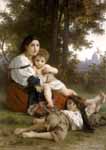Museum of Art, Cleveland (Ohio)
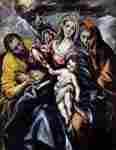
The Holy Family with St Mary Magdalen, El Greco
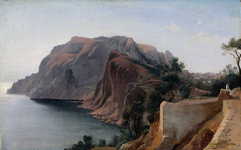
Capri, Jean-Achille Benouville
Rest, William-Adolphe Bouguereau
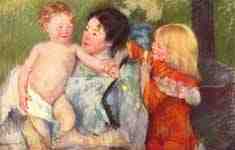
After the bath, Mary Cassatt
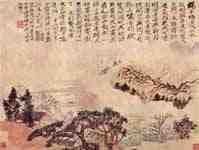
Spring on the Min River, Tao Chi
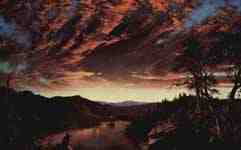
Twilight in the Wilderness, Frederic Edwin Church
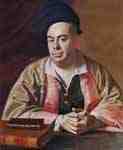
Portrait of Nathaniel Hurd, John Singleton Copley
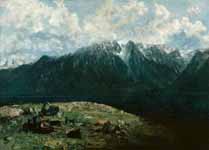
Panoramic View of the Alps, Les Dents du Midi, Gustave Courbet
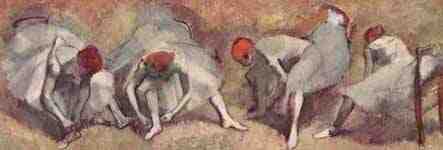
Dancers their shoes binding, Edgar Germain Hilaire Degas
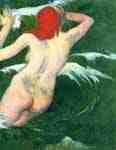
Undine, Paul Gauguin
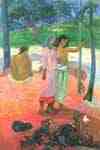
The reputation, Paul Gauguin
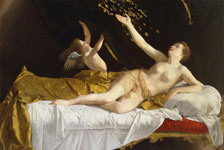
Danae, Orazio Gentileschi
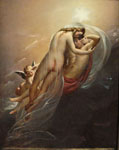
Aurora and Cephalus, Anne-Louis Girodet-Trioson
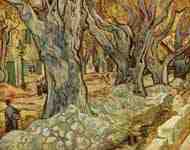
Road workers, Vincent Willem van Gogh
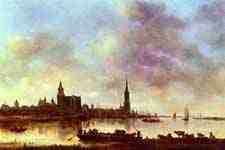
View of Emmerich, Jan van Goyen
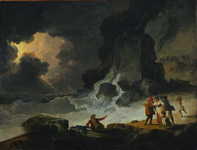
A Storm on the Isle of Wight, Julius Caesar Ibbetson
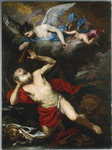
The Vision of St. Jerome, Giovan Battista Langetti
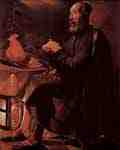
Repentance of St. Peter, Georges de La Tour
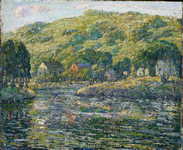
Early Spring, Ernest Lawson

Erato, Muse of Lyrical Poetry, Charles Meynier
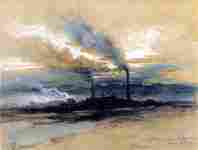
Smelting Works at Denver, Thomas Moran
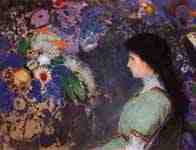
Portrait of Violette Heymann, Odilon Redon
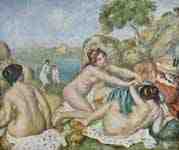 Three girls taking a bath with crab, Pierre-Auguste Renoir
Three girls taking a bath with crab, Pierre-Auguste Renoir
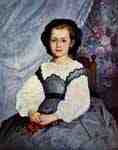
Portrait of Mademoiselle Romaine Lancaux, Pierre-Auguste Renoir
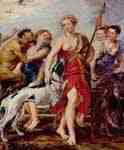
Diana with Nymphs , the departure to the hunting, Peter Paul Rubens
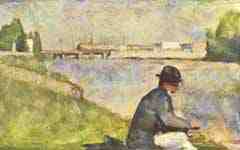
Seated man, Georges Seurat
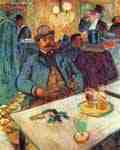
Monsieur Boileau, Henri de Toulouse-Lautrec
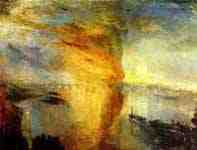
The burning of the parliament building , 16 October 1834, Joseph Mallord William Turner
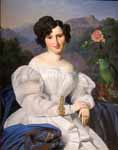
Countess Széchenyi, Ferdinand Georg Waldmüller
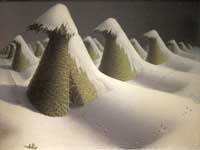
January, Grant Wood
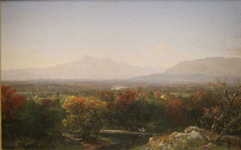
An October Day in the White Mountains, John Frederick Kensett
The Cleveland Museum of Art (CMA) is an art museum located in the Wade Park District, in the University Circle neighborhood on Cleveland's east side. Internationally renowned for its substantial holdings of Asian and Egyptian art, the museum houses a diverse permanent collection of more than 45,000 works of art from around the world.[3] The museum has remained historically true to the vision of its founders, keeping general admission free to the public and with a $750 million endowment it is "one of the wealthiest in the nation."[2] With about 598,000 visitors annually (2014), it is one of the most visited art museums in the world.[1]
History
View of the museum from the steps of the Euclid Avenue entrance to Wade Park, overlooking the Lagoon. Seen in the foreground is Frank Jirouch's 1928 bronze sculpture, Night Passing the Earth to Day.
Beginnings
"For the benefit of all people, forever."[4]
The Cleveland Museum of Art was founded as a trust in 1913 with an endowment from prominent Cleveland industrialists Hinman Hurlbut, John Huntington and Horace Kelley.[5] The neoclassical, white Georgian Marble, Beaux-Arts building was constructed on the southern edge of Wade Park, at the cost of $1.25 million.[6] Wade Park and the museum were designed by the local architectural firm, Hubbell & Benes, with the museum planned as the park's centerpiece.[7] The 75-acre (300,000 m2) green space takes its name from philanthropist Jeptha H. Wade, who donated part of his wooded estate to the city in 1881.[8] The museum opened its doors to the public on June 6, 1916, with Wade's grandson, Jeptha H. Wade II, proclaiming it, 'for the benefit of all people, forever.' Wade, like his grandfather, had a great interest in art and served as the museum's first vice-president, and later as president in 1920.[9] Today, the park, with the museum still as its centerpiece, is on the National Register of Historic Places.[10]
Mid to late 20th century expansion
Northern entrance, showing the 1971 Marcel Breuer expansion.
In March 1958, the first addition to the building opened, doubling the museum's floorspace. In 1971 the museum again expanded with the opening of the North Wing. With its stepped, two-toned granite facade, the addition designed by the Hungarian-born modernist architect Marcel Breuer, provided angular lines in distinct contrast with the flourishes of the 1916 building's neoclassical facade. In 1983, a third addition was made to house the museum's now expansive library, as well as to provide sufficient space for nine new galleries. Both the 1958 and 1983 additions, however, would be demolished to make way for the museum's largest expansion to date, a glass and steel structure designed by award-winning Uruguayan architect, Rafael Viñoly.
Expansion in the 21st century
Inside the museum's atrium, which opened in 2012
The museum's building and renovation project, "Building for the Future",[4] began in 2005 and was originally targeted for completion in 2012 (though it was not completed until 2013) at projected costs of $258 million.[11] The museum celebrated the official completion of the renovation and expansion project with a grand opening celebration held on December 31, 2013, and additional activities that continued through the first week of 2014.[12] The $350 million project—two-thirds of which was earmarked for the complete renovation of the original 1916 structure—added two new wings, and was the largest cultural project in Ohio's history.[4] The new east and west wings, as well as the enclosing of the atrium courtyard under a soaring glass canopy, have brought the museum's total floor space to 592,000 square feet (55,000 m2) (an increase of approximately 65%).
While the first phase of the project cost saw $9.3 million in cost overruns and pushed back the initial reopening by 9 months, (then) museum director Timothy Rub assured the public that increase in quality would be worth both the wait and expense.[13] In June 2008, after being closed for nearly three years for the overhaul, the museum reopened 19 of its permanent galleries to the public in the renovated 1916 building main floor.
On June 27, 2009, the newly constructed East Wing (which contains the Impressionist, Contemporary, and Modern art collections) opened to the public.
Chester Beach's Fountain of the Waters adjacent the museum's main entrance in Wade Park.
On June 26, 2010, the ground level of the 1916 building reopened and now houses the collections of Greek, Roman, Egyptian, Sub-Saharan African, Byzantine, and Medieval art.[14] The expanded museum includes enhanced visitor amenities consisting of new restrooms, an expanded store and café, parking capacity increased to 620 spaces, and a 34,000 square feet (3,200 m2) glass-covered courtyard.
Wade Park
Main article: Wade Park (Cleveland park)
Wade Park includes an outdoor gallery displaying part of the museum's holdings in the Wade Park Fine Arts Garden. The bulk of this collection is located between the original 1916 main entrance to the building and the lagoon. Highlights of the public sculpture include the large cast of Chester Beach's 1927 Fountain of the Waters; a monument to the Polish expatriate and American Revolutionary War-hero Tadeusz Kościuszko; and the 1928 bronze statuary sundial by Frank Jirouch, Night Passing the Earth to Day, which sits across Wade Lagoon from the museum, near the park's entrance on Euclid Avenue. Rodin's The Thinker sits atop of the museums main staircase, and has a unique but troubled history. Partially destroyed in a 1970 bombing (allegedly by The Weathermen),[15] the statue has been left in its unrestored condition. The reasoning for not repairing it stems from the involvement of Rodin in its original casting and the damage—which is notated on the plaque mounted at the base of the statue's pedestal— has come to define the casting as unique among the more than twenty original large castings.
Holdings
George Bellows, Stag at Sharkey's, 1909.
Pablo Picasso's, Blue Period piece, La Vie (1903), is one of the highlights of the museum's Modern European Painting and Sculpture collection.
The Cleveland Museum of Art divides its collections into 16 departments including Chinese Art, Modern European Art, African Art, Drawings, Prints, European Art, Textiles & Islamic Art, American Painting & Sculpture, Greek & Roman Art, Contemporary Art, Medieval Art, Decorative Art & Design, Pre-Columbian and Native North American Art, Japanese & Korean Art, Indian & Southeast Asian Art, and Photography. Artists represented by significant works include Olivuccio di Ciccarello, Botticelli, Caravaggio, El Greco, Poussin, Rubens, Frans Hals, Gerard David, Goya, J.M.W. Turner, Dalí, Matisse, Renoir, Gauguin, Frederic Edwin Church, Thomas Cole, Corot, Thomas Eakins, Monet, Vincent van Gogh, Picasso, George Bellows. The Museum has been active recently in acquiring later 20th-century art, having added important works by Warhol, Jackson Pollock, Christo, Anselm Kiefer, Ronald Davis, Larry Poons, Leon Kossoff, Jack Whitten, Morris Louis, Jules Olitski, Chuck Close, Robert Mangold, Ching Ho Cheng, Mark Tansey and Sol LeWitt, among others.
Ingalls Library
In addition to its comprehensive collection of fine art, the Cleveland Museum of Art is also home to the Ingalls Library, one of the largest art libraries in the United States.[16] As part of the initial 1913 plan by the museum's founders, a library of 10,000 volumes was to be assembled, to include photographs and archival works. By the 1950s, the collection of books alone had surpassed 37,000 and the photographic collection neared 47,000.[17] Today, with more than 500,000 volumes (and 500,000 digitized slides), renovation of the library space was one of the focal points in the museum's $350 million expansion.
Selections from the permanent collection
In June 2004, the museum acquired an ancient bronze sculpture of Apollo Sauroktonos, believed to be an original work by Praxiteles of Athens. Because the work has a contested provenance, the museum continues to study the dating and attribution of the sculpture. In 2011, Michael Bennet, the Greek and Roman arts curator, announced that he had dated the piece to 350 B.C. to 250 B.C.[18] In 2003, the museum held a focus exhibition on the statue, and in conjunction with this announced its reattribution to Apollo the Python-Slayer, that the statue was almost certainly an original work by Praxiteles himself, and that laboratory investigations and expert testimony conclusively show the bronze was neither a recent discovery nor recovered from the sea.[19]
The museum is especially strong in the field of Asian art, possessing one of the best collections in the U.S.[20]
In 2008, the United States Postal Service selected the Cleveland Museum's famed Botticelli painting entitled Virgin and Child with the Young John the Baptist as the Christmas stamp for that year.[21]
Programs
The Cleveland Museum of Art also maintains a schedule of special exhibitions, lectures, films and musical programs. The department of performing arts, music and film hosts a film series[22] and the museum's Performing Arts Series,[23] which brings the creative energies of internationally renowned artists into Cleveland.
The department of education[24] at CMA creates programs for lifelong learning from lectures, talks and studio classes to outreach programs and community events, such as Parade the Circle",[25] Chalk Festival[26] and the "Winter Lights Lantern Festival".[27] Educational programs include distance learning,[28] "Art to Go",[29] and the "Educator's Academy".[30] The museum is also home to the Ingalls Library, one of the largest art museum libraries in the United States with over 500,000 volumes.[16]
Governance
Attendance
The museum reported attendance of 597,715 during the period between July 1, 2013 and June 30, 2014, the highest total in over a decade.[1]
Finance
In 1958, a $35-million bequest by industrialist Leonard C. Hanna Jr. vaulted the Cleveland Museum of Art into the ranks of the country's richest art museums.[31] Today, the museum receives operating support from the Ohio Arts Council through state tax dollars. It is funded by Cuyahoga County residents through Cuyahoga Arts and Culture. The museum derives around two thirds of its $36 million budget from interest on its endowment, which was reported as $750 million in 2014.[32][33] From a fund of $277 million, the museum draws out about $13 million a year.[34]
Marketing
The museum has also taken an active role in presenting music concerts and lectures. These include performances by Chanticleer (ensemble), Roomful of Teeth, and John Luther Adams among others.
Directors
William M. Griswold (2014-)
Fred Bidwell (2013-2014, interim director)
Dr. David Franklin (2010-2013)
Deborah Gribbon (2009-2010, interim director)
Timothy Rub (2006-2009)[11]
Katharine Lee Reid (2000-2006)[36]
Kate Sellars (1999-2000, interim director)[36]
Robert P. Bergman (1993-1999)[37]
Dr. Evan Hopkins Turner (1983-1993)[38]
Dr. Sherman E. Lee (1958-1982)
William M. Milliken (1930-1958)
Frederick Allen Whiting (1913-1930)
References
Cleveland Museum of Art Reports Strong Gains in Attendance, Membership, Fundraising The Cleveland Museum of Art.
Steven Litt, The Plain Dealer (May 20, 2014). "William Griswold, director of the Morgan Library & Museum in New York, is named director of the Cleveland Museum of Art". cleveland.com. Retrieved 2014-07-15.
"General Museum Information". Retrieved 2015-03-23.
"the building project - The Cleveland Museum of Art". Clevelandart.org. Retrieved 2011-12-28.
"The Cleveland Museum of Art". Clevelandart.org. Retrieved 2011-12-28.
"about - The Cleveland Museum of Art". Clevelandart.org. 2002-09-28. Retrieved 2011-12-28.
"Hubbell and Benes". Architectureofcleveland.com. Retrieved 2011-12-28.
"Encyclopedia of Cleveland History:WADE, JEPTHA HOMER I". Ech.case.edu. 1997-07-23. Retrieved 2011-12-28.
"Encyclopedia of Cleveland History:WADE, JEPTHA HOMER II". Ech.cwru.edu. Retrieved 2011-12-28.
"National Register of Historical Places - OHIO (OH), Cuyahoga County". Nationalregisterofhistoricplaces.com. Retrieved 2011-12-28.
Carol Vogel (January 6, 2006), Cleveland Museum Gets New Director New York Times.
[1]
Cleveland Museum of Art renovations beginning to see the light, The Plain Dealer, March 29, 2008.
"calendar - The Cleveland Museum of Art". Clevelandart.org. Retrieved 2011-12-28.
"JAIC 1998, Volume 37, Number 2, Article 2 (pp. 173 to 186)". Aic.stanford.edu. Retrieved 2014-07-15.
"History of the Ingalls Library". Clevelandart.org. Retrieved 2014-07-15.
"About the Ingalls Library". Clevelandart.org. Retrieved 2014-07-15.
"Cleveland Art Apollo". Clevelandart.org. Retrieved 2014-07-15.
"Cleveland Museum of Art Presents Praxiteles: The Cleveland Apollo". 2013-09-27. Retrieved 2015-03-23.
"DIA's collection has national luster | detnews.com | The Detroit News - 11/06/2007". detnews.com. 2007-11-06. Retrieved 2014-07-15.
[2][dead link]
"films - The Cleveland Museum of Art". Clevelandart.org. Retrieved 2013-04-26.
The Cleveland Museum of Art
"Learn | Cleveland Museum of Art mobile site". Clevelandart.org. Retrieved 2014-07-15.
"Parade the Circle | The Cleveland Museum of Art". Clevelandart.org. Retrieved 2014-07-15.
"Chalk Festival | The Cleveland Museum of Art". Clevelandart.org. Retrieved 2014-07-15.
"Winter Lantern Lights Festival | The Cleveland Museum of Art". Clevelandart.org. Retrieved 2014-07-15.
"Distance Learning | The Cleveland Museum of Art". Clevelandart.org. Retrieved 2014-07-15.
"Art to Go | The Cleveland Museum of Art". Clevelandart.org. Retrieved 2014-07-15.
Cleveland Museum of Art - Educators Academy[dead link]
Elaine Woo (July 20, 2008), Cleveland art museum director gave it prestige Los Angeles Times.
Jason Edward Kaufman (January 8, 2009), How the richest US museums are weathering the storm The Art Newspaper.
Carol Vogel (May 20, 2014), Cleveland Hires Leader Of Morgan New York Times.
Judith H. Dobrzynski (March 14, 2012), How an Acquisition Fund Burnishes Reputations New York Times.
"CMA Research Resources : The Thinker at the CMA". Clevelandart.org. Retrieved 2014-07-15.
Judith H. Dobrzynski (January 5, 2000), Museum Chief in Cleveland New York Times.
William H. Honan (May 7, 1999), Robert P. Bergman, 53, Head Of Cleveland Museum of Art New York Times.
Susan Heller Anderson (May 18, 1982), CLEVELAND MUSEUM CHOOSES DIRECTOR New York Times.
Further reading
(Japanese) 門脇 興次 (前クリーブランド日本語補習校(Japanese Language School of Cleveland)教諭・千葉県立成田市立東小学校教諭). "補習授業校における国際理解教育の実践 : クリーブランド美術館におけるジャパニーズフェスティバルを通して." 在外教育施設における指導実践記録 24, 111-114, 2001. Tokyo Gakugei University. See profile at CiNii.
----
Fine Art Prints | Greeting Cards | Phone Cases | Lifestyle | Face Masks | Men's , Women' Apparel | Home Decor | jigsaw puzzles | Notebooks | Tapestries | ...
----
Artist
A - B - C - D - E - F - G - H - I - J - K - L - M -
N - O - P - Q - R - S - T - U - V - W - X - Y - Z
Retrieved from "http://en.wikipedia.org/"
All text is available under the terms of the GNU Free Documentation License


